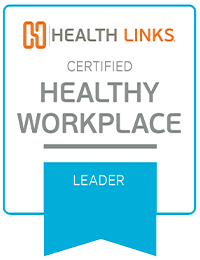
Maiker Housing Partners’ journey with Health Links® began with a little bit of a surprise. As part of the Healthy Workplace Assessment™, they gathered data on the demographics of their employees and soon realized that the actual ratio of women to men was much higher than they thought. This realization led them to reexamine their employee handbook and health and safety policies. Did their programs reflect the demographic makeup of their workforce? What changes could they make to better support the needs of their employees?
One policy Maiker noticed that needed attention was their lactation rooms. The company had a policy in its handbook for breastfeeding mothers, but the program aligned with it was not set up to handle the needs of their employees. They established a quiet/lactation room in their office, integrated with an Outlook calendar so employees could schedule their time in the room to ensure availability and privacy.
In early 2018, Maiker moved into a new building where employee well-being is clearly prioritized. The new space is complete with a gym, shower rooms, quiet/lactation room, abundant natural light, and outdoor eating areas. It is also in close proximity to an RTD station as well as the Small Dry Creek trails, where the company’s wellness walking group frequents.
A major area of employee well-being that Maiker has championed is nutrition. Not surprisingly, they see higher participation and receive positive feedback for events involving food. They recently completed a wellness challenge where employees were encouraged to cook meals at home and bring them to work for lunch each day for a month. As a resource during the challenge, Maiker hosted a lunch and learn workshop with a local nutritionist on how to meal prep and create a “colorful plate” where multiple food groups are represented.
Although roughly one-third of Maiker‘s employees office at their headquarters, two-thirds are spread throughout Adams County at their various properties. A common struggle for companies in multiple locations is how to involve remote employees in their well-being activities, which are often in-person. Maiker's wellness committee launched a weeklong sleep challenge, where they encouraged employees to try to increase and log the number of hours they slept each night. The company posted daily tips available to employees at all locations on how to get more and better sleep.
Part of their strategy in getting employees from all locations involved is taking program evaluation and employee feedback (one of the six Healthy Workplace Assessment benchmarks) seriously. Lakshmi Kollengode and Sonia Tirado, co-chairs of the wellness committee at Maiker, emphasize that “programs and activities should be in sync with company culture. By implementing program changes based on employee feedback, you’ll get an increase in participation from diverse employee groups whose voices have been heard.” Maiker also stresses the importance of having diverse employee representation in their wellness committee. Every employee in every location is welcome to join the committee and contribute based on their individual availability. How does Maiker get them to join? Simple.
Quality swag.
Maiker's wellness committee sports well-designed t-shirts with the Maiker Wellness logo—a ‘feel-proud’ piece of swag given to all participants. The committee has been experiencing a significant increase in employees' requests to join. Free swag or not, when you have employees knocking on the door to get involved in your well-being program, it’s not a bad problem to have.
Far and away, Maiker has found annual goal setting to be the most useful part of working with Health Links. “We take our goal setting sessions with Health Links very seriously,” says Lakshmi. “We plan the rest of the year, our activities and meetings, around those goals and focus on how we can achieve them.” If an organization is struggling with its health, safety, or well-being programs, Lakshmi says it needs to “be strategic and use Health Links! I strongly feel that goal setting is the most important part of the process, followed by activities that justify how to bring us closer to the goals we have set.”
Written by Laura Veith, Marketing & Communications Coordinator for Health Links and the Center for Health, Work & Environment based at the Colorado School of Public Health.
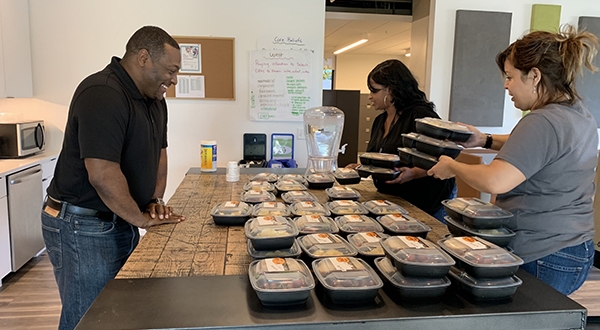
Meal Prep Workshop
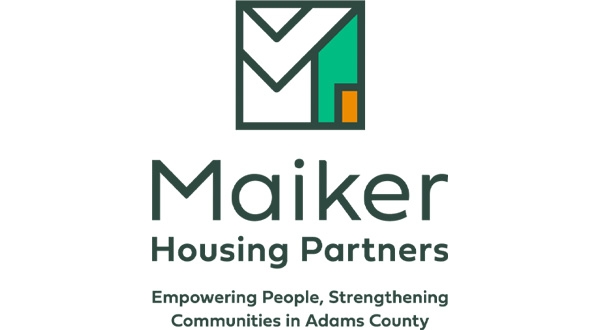
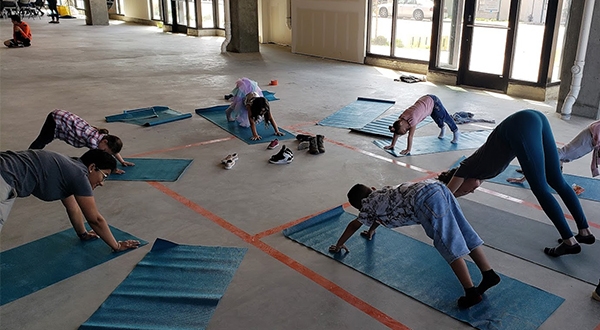
Bring Your Child to Yoga Day
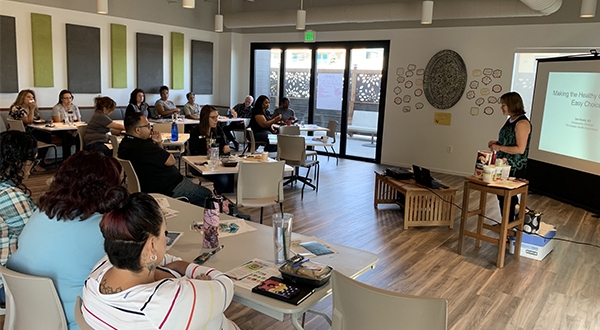
Colorful Plate Meal Workshop

Brown Bag Challenge winners
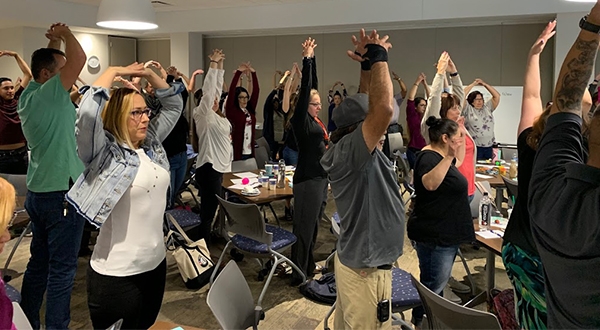
Stretches during all-hands meeting
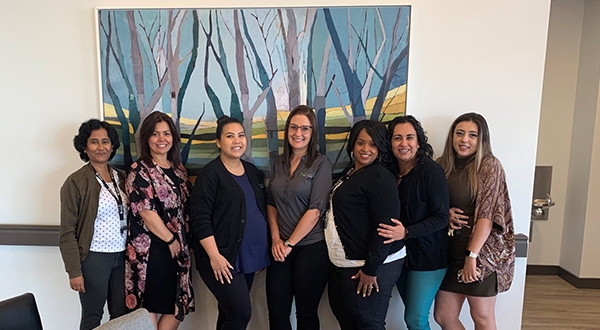
Wellness Committee